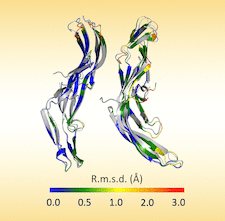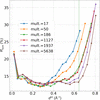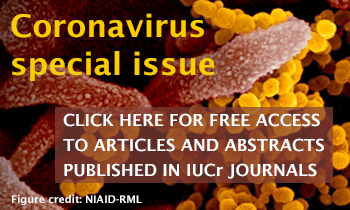issue contents
January 2025 issue

Cover illustration: AlphaFold-guided molecular replacement: a comparison of the AlphaFold model of the α2/β5 protein from C. elegans with the refined structure [Wang et al. (2025), Acta Cryst. D81, 4–21].
CCP4
Open  access
access
 access
accessThe Guest Editors introduce the special issue based on talks at the CCP4 Study Weekend 2023. The virtual issue is available at https://journals.iucr.org/special_issues/2024/CCP42023/.
research papers
AlphaFold predictions of protein structures can be highly effective for crystal structure determination by the method of molecular replacement. A high degree of automation is possible with attention to prediction-reliability cutoffs, delineation of domains, and subclusterings to reveal alternative conformations. An AF-guided MR script, thus devised and openly available, solved 93% of 372 test cases.
Open  access
access
 access
accessThis study highlights the efficiency and effectiveness of small-wedge synchrotron crystallography in analyzing protein structures through massive data collection and advanced data-processing techniques, including machine learning, resulting in significant improvements in structural information.
Download citation


Download citation


Open  access
access
 access
accessCrystal structures of ACDC domains derived from distinct Plasmodium ApiAP2 proteins reveal a conserved, unique noncanonical four-helix bundle architecture.

 journal menu
journal menu





















